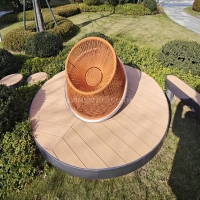Welcome to the website for landscape facilities products and knowledge.
What are the design considerations for landscape tables in earthquake-prone regions?
Designing landscape tables for earthquake-prone regions requires a meticulous approach to ensure safety, functionality, and longevity. Key considerations include material selection, structural integrity, and site-specific seismic activity analysis.
1. Material Durability: Opt for lightweight yet robust materials like aluminum or reinforced polymers to minimize inertial forces during tremors. Avoid brittle materials such as untreated concrete or glass.
2. Structural Reinforcement: Incorporate flexible joints, cross-bracing, or base isolators to absorb seismic energy. Anchoring tables to foundations with shock-absorbing hardware can prevent toppling.
3. Low Center of Gravity: Design tables with wide, weighted bases to enhance stability. Avoid tall or top-heavy configurations that may amplify shaking effects.
4. Site-Specific Adaptations: Account for local soil conditions and seismic zone ratings. Tables in liquefaction-prone areas may require deeper foundations or geotextile stabilization.
5. Maintenance Accessibility: Ensure easy inspection and repair of structural components post-earthquake to prolong usability.
By integrating these principles, landscape tables can withstand seismic events while maintaining aesthetic and functional value in public or private spaces.
Related search:

Recommendation
Swivel chair-Specialty steel structure woven rattan leisure chair with rotatable design